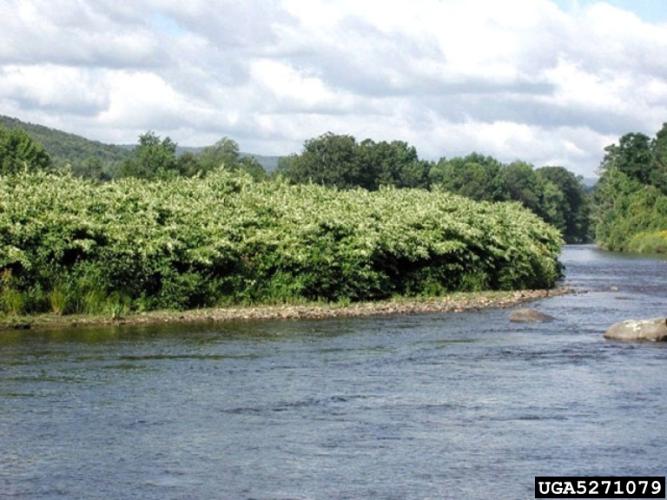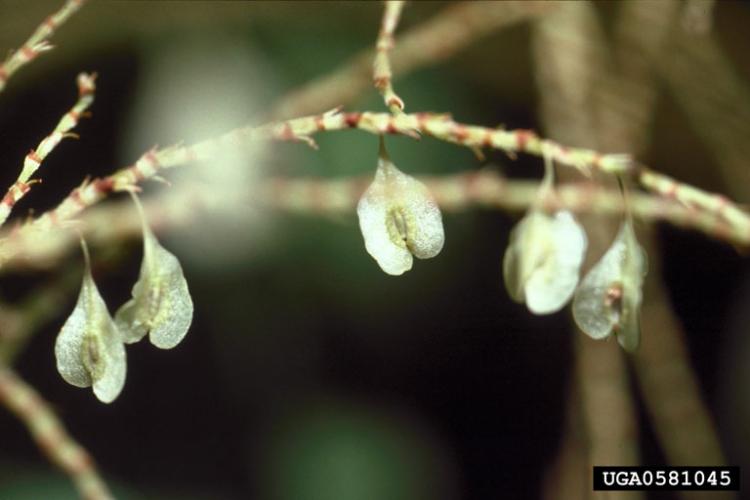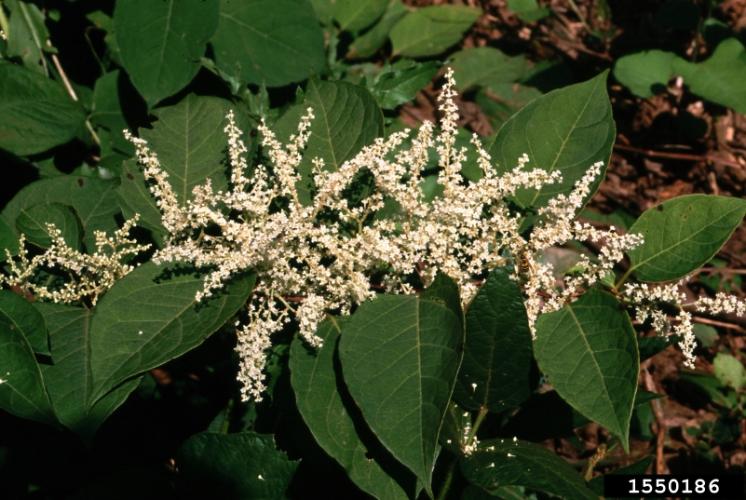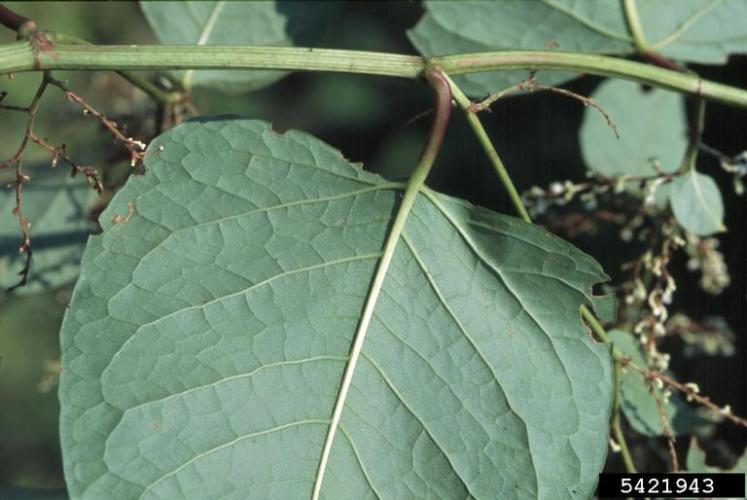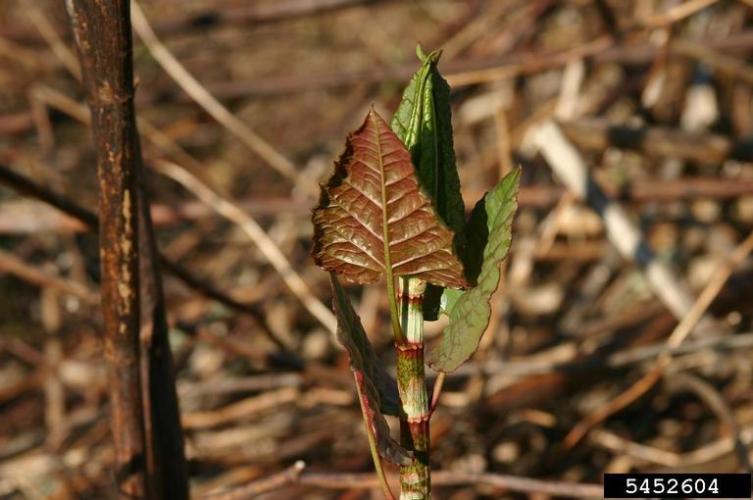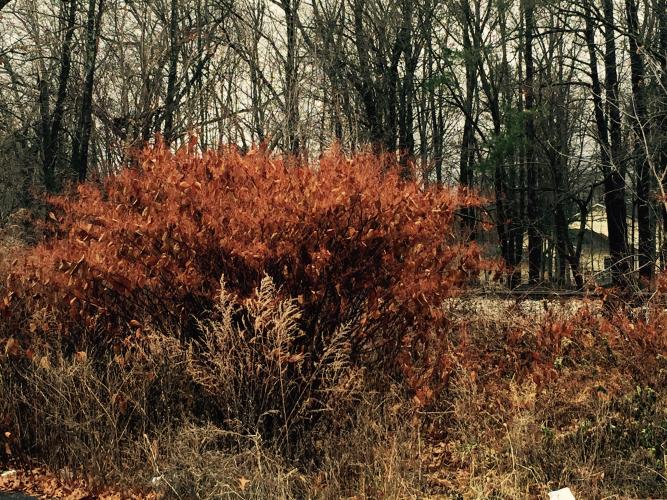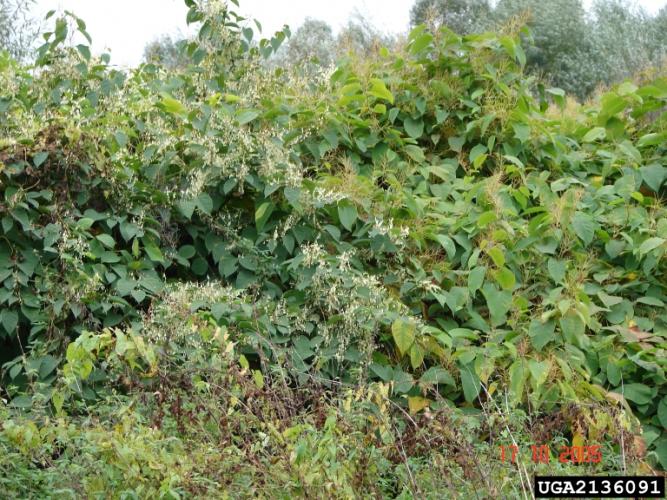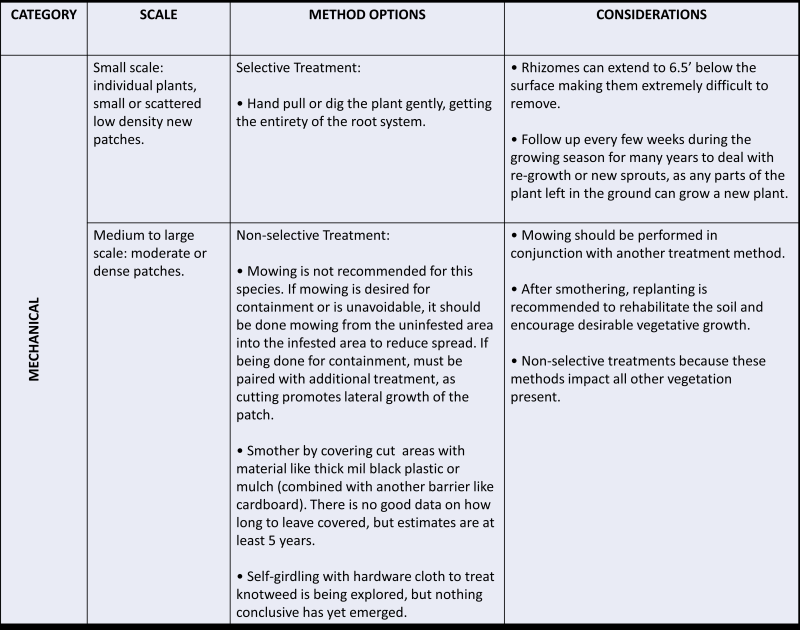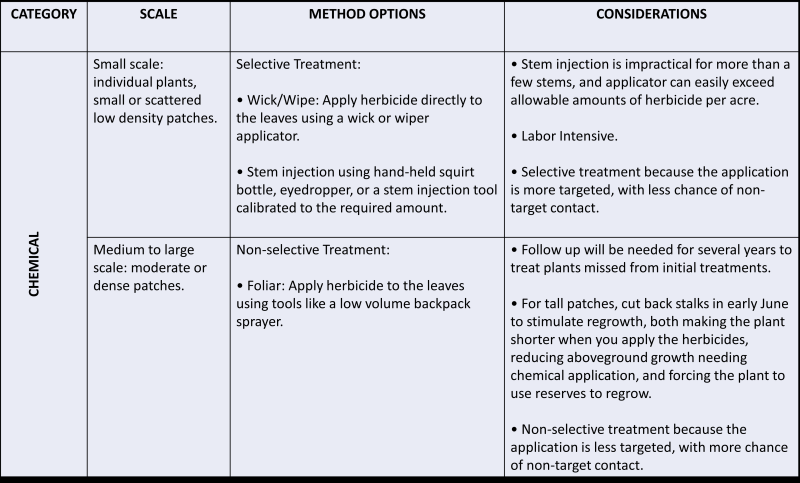Knotweed, Japanese
Identification
Appearance
Japanese knotweed is an upright, shrublike, herbaceous perennial that can grow to over 10 feet in height. As with all members of this family, the base of the stem above each joint is surrounded by a membranous sheath.
Foliage
Stems of Japanese knotweed are smooth, stout and swollen at joints where the leaf meets the stem. Although leaf size may vary, they are normally about 6 inches long by 3 to 4 inches wide, broadly oval to somewhat triangular and pointed at the tip.
Flowers/ Fruit
The minute greenish-white flowers occur in attractive, branched sprays in summer and are followed soon after by small winged fruits. Seeds are triangular, shiny, and very small, about 1/10 inch long.
Check out the downloadable fact sheet above.
Check out this video by the OutSmart Project on how to identify Japanese knotweed.
Biology
Ecological Threat
Knotweeds are capable of quickly forming dense stands where they can crowd out native vegetation. Thickets can clog small waterways and displace streamside vegetation, increasing bank erosion and lowering the quality of riparian habitat for fish and wildlife. Once established, these stands are very difficult to eradicate.
ORIGIN
Both species of knotweed were introduced into North America for ornamental use and for forage and erosion control in the late 1800s.
HABITAT
Forest edges, meadows, fields, floodplains, disturbed areas
Life Cycle
The stems can reach heights of up to 10 feet tall, with some records indicating they can grow to 13 feet tall. The older shoots tend to get woody near the base as they age. Flowers emerge in late summer as small white to off-white racemes / panicles. Pollination is by insects, primarily by bees. The three-winged seeds (Calyx) were often thought to be sterile; however, a basic germination test in NH showed that 95% of seeds collected from various populations were viable, but not seen as a significant vector for its spread.
Seedlings often succumb to frost, desiccation, shade, predation and smothering. The rooting system, which is composed of numerous intertwined rhizomes that can grow up to 3 inches in diameter, is the primary reproductive propagule that enables it to quickly spread to new locations. The rhizomes have the potential to spread laterally 23 to 65 feet away from the crown. Most also have a deep taproot.
Based on the extensive rooting system, the majority (2/3) of Japanese knotweed plants occurs below ground. It helps to ensure the plant will rebound if damage to the shoots occurs. In addition, perennating buds found on the root crown and along the rhizomes will also react to shoot damage, i.e. mowing/cutting, by sending up additional shoots along the root. This typically results in radial/clonal spread of the plant and increases its shoot density.
Vermont Distribution
How You Can Help
NATIVE/NON-INVASIVE ALTERNATIVES
Common buttonbush (Cephalanthus occidentalis)
Native Perennials and Shrubs for Vermont Gardens
Alternatives to Common Invasive Plants and Characteristics of Select Alternatives
Citations
PHOTO CREDIT
Giant Knotweed and Japanese knotweed, 2136091, Barbara Tokarska-Guzik, University of Silesia, CC 3.0
New shoot of Japanese knotweed, Leslie J. Mehrhoff, University of Connecticut, CC 3.0
Japanese knotweed seeds, 0581045, Jil Swearingen, USDI National Park Service, CC 3.0
Japanese knotweed flowers, 1550186, Ohio State Weed Lab, The Ohio State University, CC Non-com 3.0
Japanese knotweed leaf, 5421943, James H. Miller, USDA Forest Service, CC 3.0
Japanese knotweed in winter, Elizabeth Spinney, VT FPR
Japanese knotweed infestation, 5271079, Leslie J. Mehrhoff, University of Connecticut, CC 3.0
INFORMATION CREDIT
Video: Outsmart Invasive Species Project, Japanese knotweed
Vermont Chapter of The Nature Conservancy
Wisconsin DNR, Japanese knotweed
Pennsylvania DCNR, Japanese knotweed
Minnesota Department of Agriculture Summary of Japanese Knotweed
Michigan Department of Natural Resources Best Control Practices for Japanese Knotweed
New Hampshire Department of Agriculture, Markets & Food BMPs for Japanese Knotweed 2018
